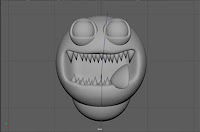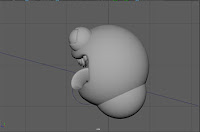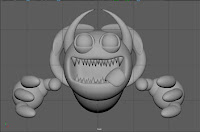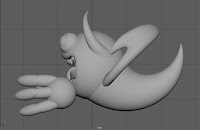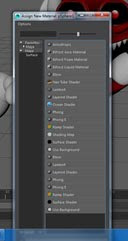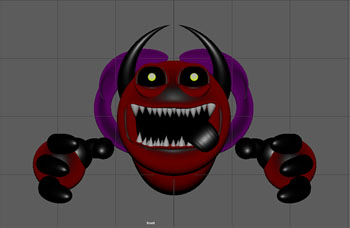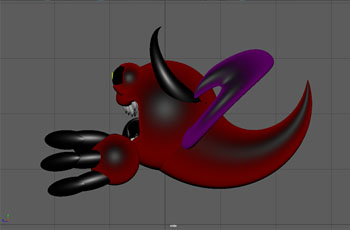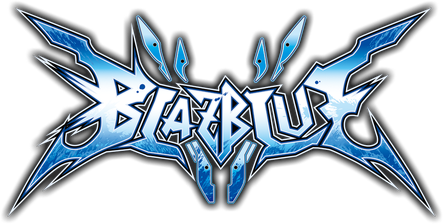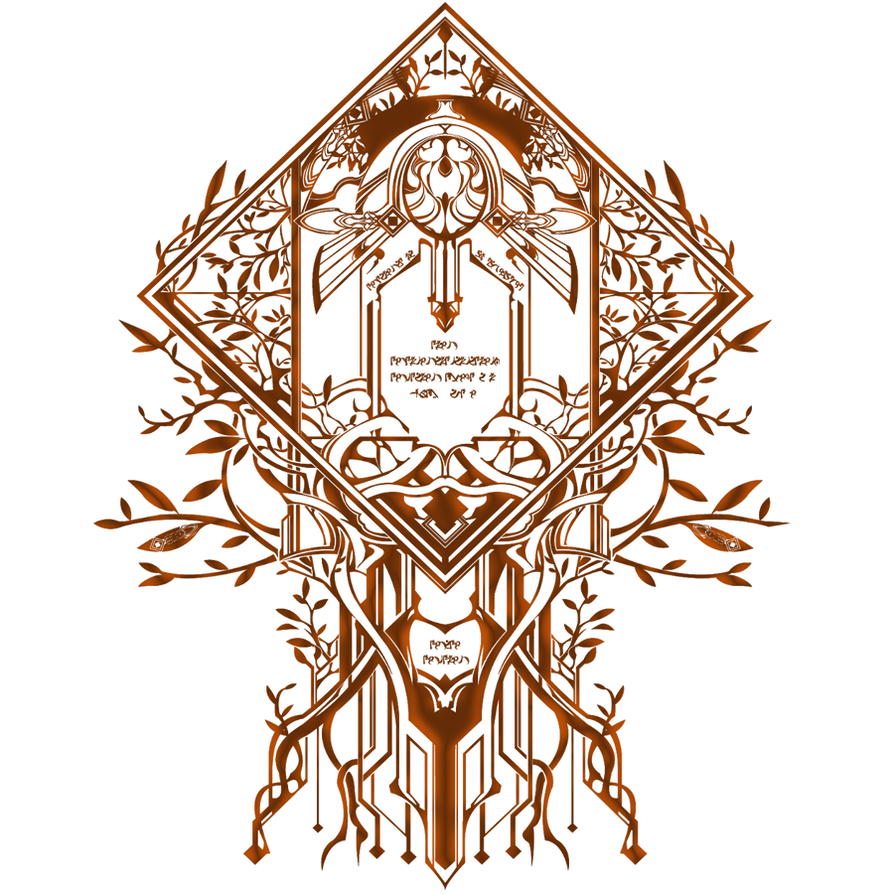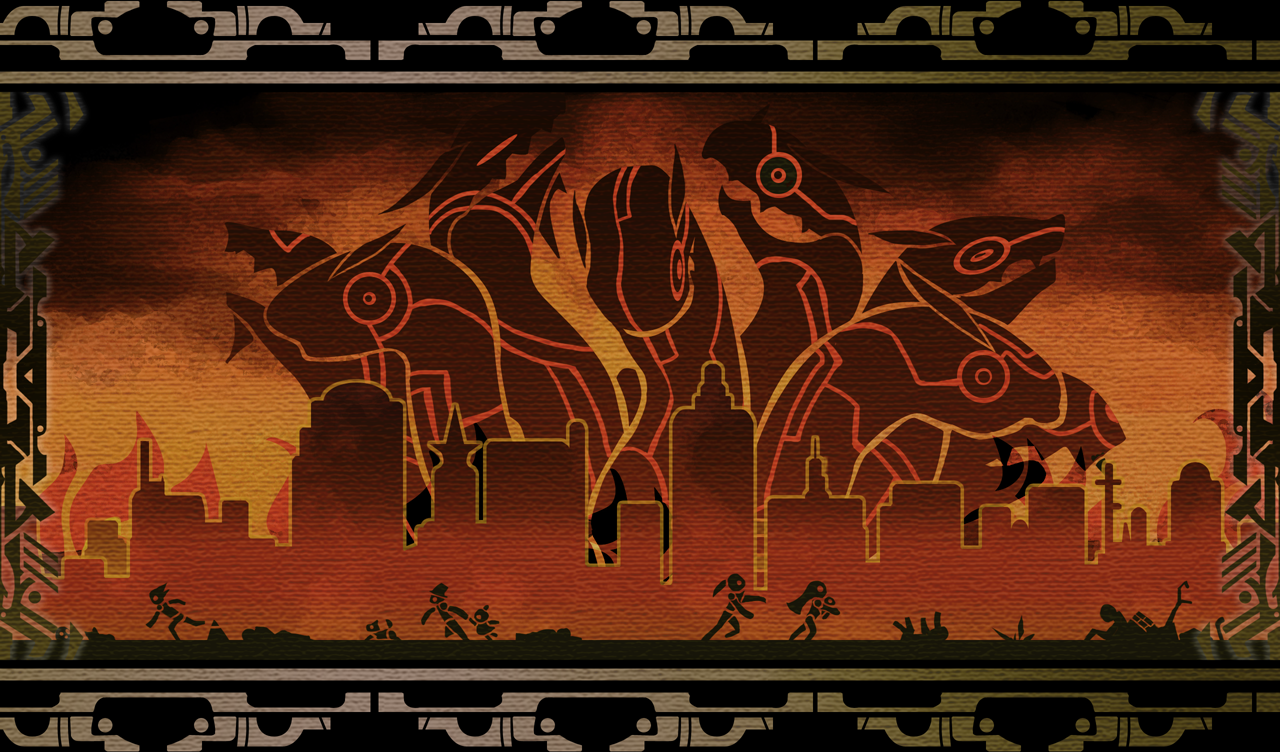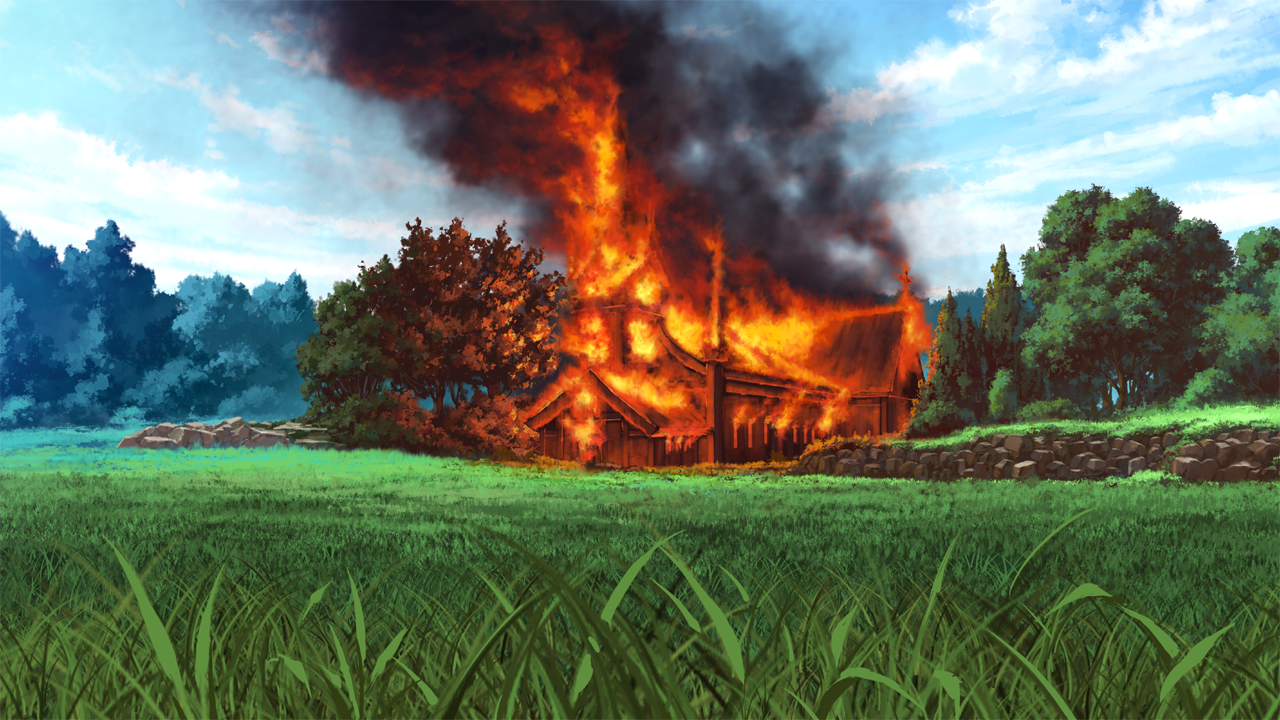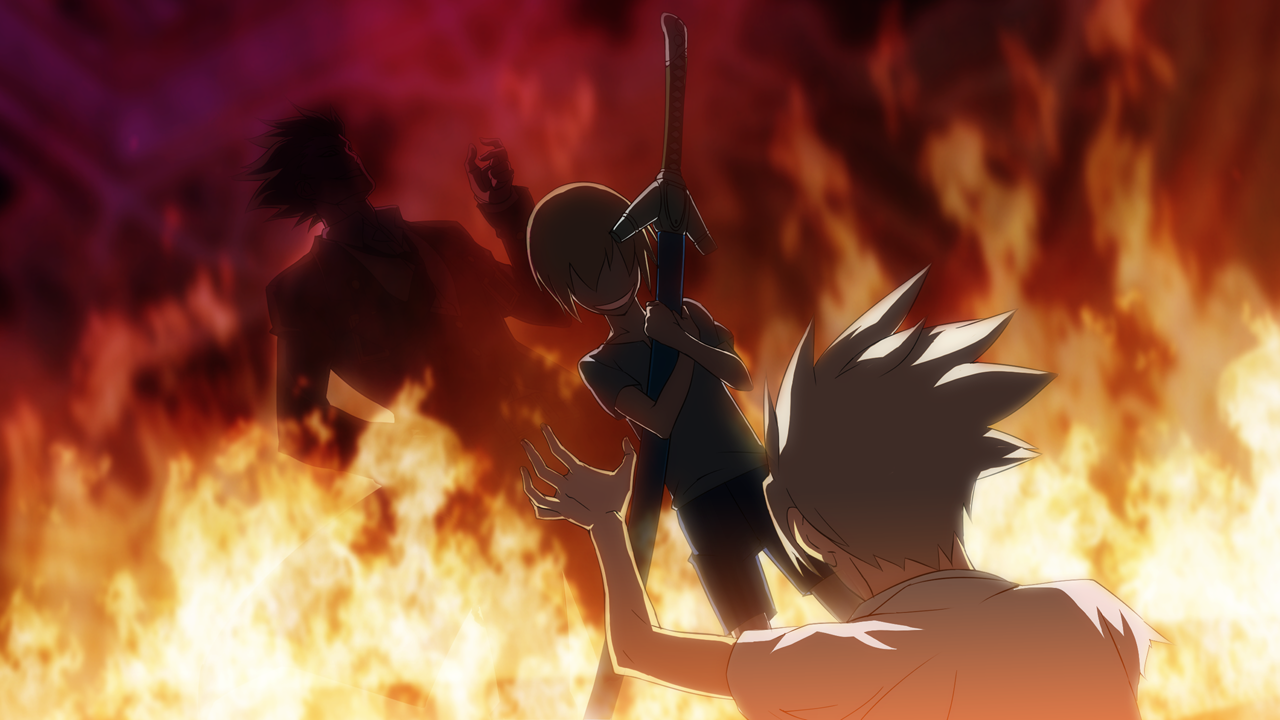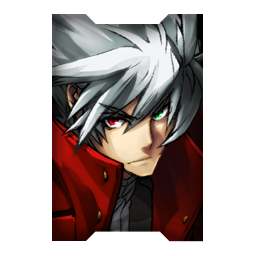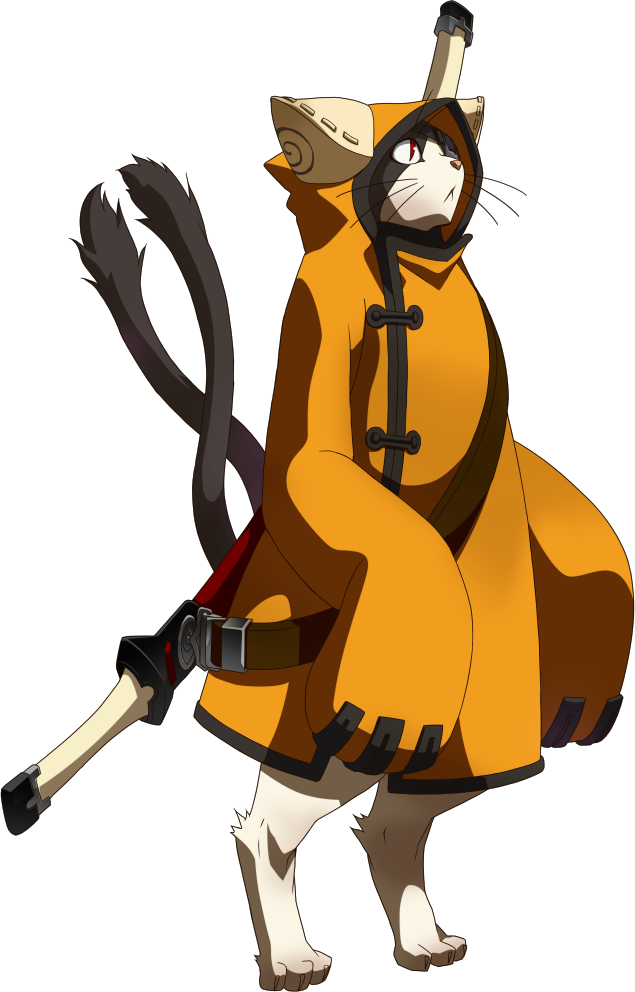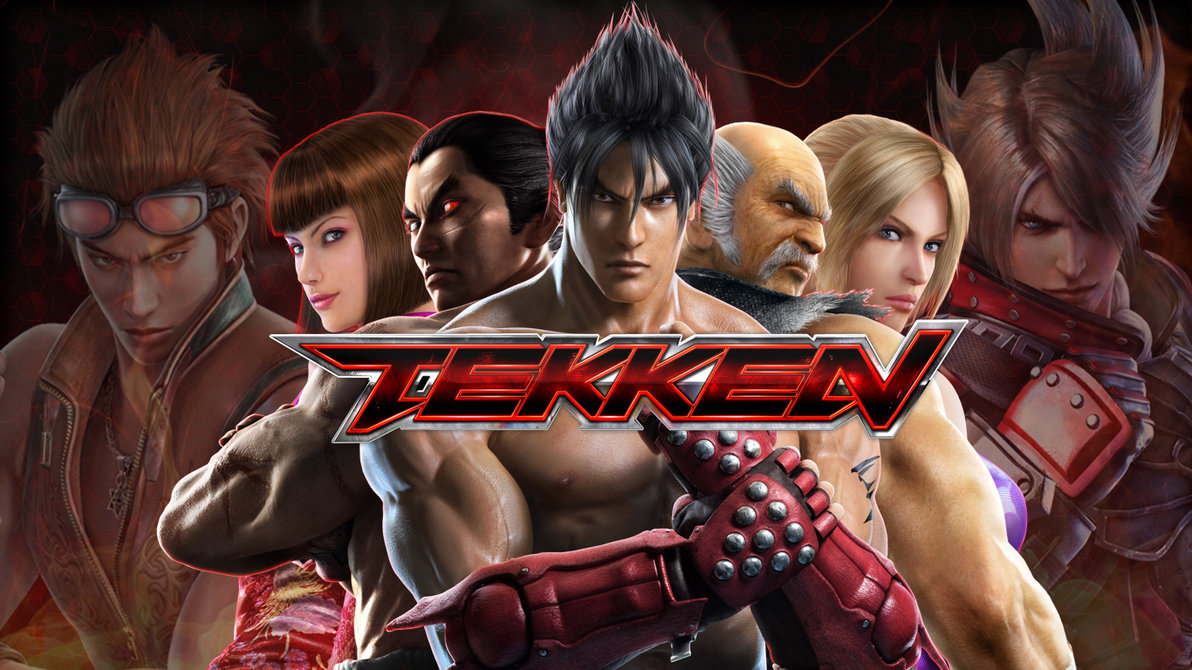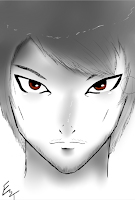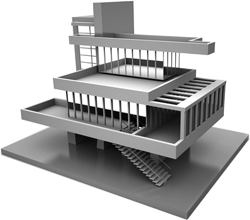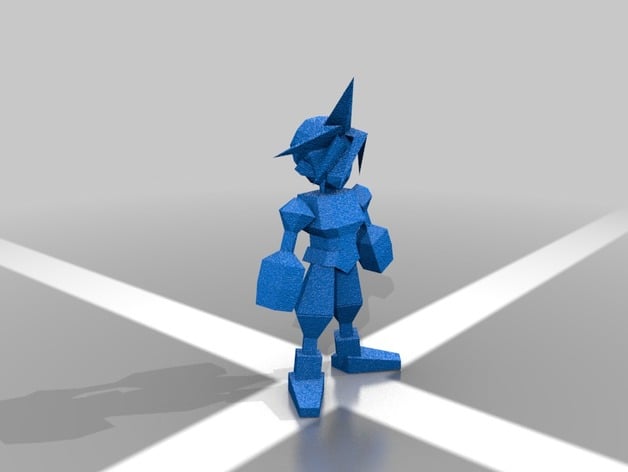Unit 4 & 5 - Game Evaluation
Initial Concept
For my concept, I immediately drew inspiration from DOOM (2016), as at the time it was a game I was very fond of and interested in with its focus on fast paced combat, and robust level design. The story was set in Spain, and the player controls a person known as "Vega". The gimmick would be that they would be wearing a tinted motorcycle helmet and with no skin on show. This was done to give the player a better time projecting themselves onto the character, allowing them to become more invested into the protagonist. The player would start out in a small town already affected by the mysterious clown invasion, and must quickly search the area for information leading to the path forward, as well as power ups and other little collectibles. There would be little explanation as to why the character is so experienced from the get go, as I wanted to key focus to be the game play, and give little expansions on plot through progression and notes found throughout the levels.
Admittedly this was a bit of an ambiguous task going in, as I was creating the game by myself, but I wanted to challenge myself and see how well I could do. Overall, I think I met it about half way. Time constraints and various bugs and problems led to a good amount of content being scrapped. A HUGE constraint I had while making my game, was the fact that no matter what I could not ever import models and meshes I created in Maya into Unreal. Meaning all of the assets used were from Unreal. Several key models had to be shelved because of this, such as the weapons, enemies, objects. Basically everything. This not only stopped me from adding my own assets, but it halted a lot of the time I could've spent working on the game, which led to more delays due to the lack of time. Despite this, I kept going and made appropriate adjustments where they were needed. For example, instead of having my own model to differentiate the player model from the enemies, I would simply throw on a vibrant, glowing texture so they at least stood out in the levels and would grab the players' attention.
Levels/Stages
- Stage 1
Features - Forest, Hills, Single Building
The beginning level is relatively the same, as it takes place on Earth, features a building surrounded by wilderness, however the overall size had to be cut down due to time. As a way to get away with adding odd and ways to manipulate the environments in my game, the story enables the clown world to infect and break apart reality of the real world, so that is why there are buildings that are merged with rocks and impossible physics, as the clown portals are shifting what is physically possible as it becomes more unstable. Originally the level was meant to be more open, with around 3-4 buildings the player could enter and explore, this was unfortunately cut down to one, with a portal leading to next level. I wanted the focus to be more focused on how the invasion is destroying the world, with the player starting in an ominous woodland area, and the sounds of distant shooting, sirens, and people screaming can be heard. I felt as though this would add a bit more immersion to the world and make the level feel more like an actual "world" being attacked, not just the player being affected by what's in front of them. The player will walk forward through a degrading forest till they come across the main building of the level, in there they will find corpses of those unfortunately caught by the Clown Portal, and as well as that two Clown enemies stalking the halls. When the player makes their way upstairs, they shall find the portal for the next stage and enter it to progress.
- Stage 2
Features - Cave, Degrading Building, Abyss
Once the player enters the portal, they are thrown into a hellish cave leading two ways. If they venture behind their spawn, they will be greeted to an endless abyss, with a spiraling, demonic sky box that has gotten out of control. I included sounds of a subtle yet noticeable thunderstorm for ambient sounds, to help sell the out of control sky box surrounding the level. Clearly this shouldn't be the way to go so the player heads the other way, towards orange lights placed to help guide them. However I also chose more hot colours like orange and red to represent danger incoming, as they'll soon find themselves not alone. As they make there way up the stairs, it becomes apparent that the nonsensical cave has merged with a building of some sorts, which is being corrupted by the clown's presence. This level was designed to be more combat focused with the player facing roughly 8 clowns, and giving more freedom to moving around the environment. Moving past the way up the stairway and through a darkened room, the player should find the second portal, leading to the final stage. With a lasting shot of the vast sky box.
- Stage 3
Features - Meteor, Planet, F.T.L. Space travel Skybox
At last the final stage arrives. For the sake of punctuating the feeling of a rush and feeling of a "Final Stage" with high stakes, I placed in some more noticeable music (Tekken 7 - Mishima Building). I felt this was a fitting choice due to the unnatural tempo the song has, and as well as that it luckily matches the speed of the sky box. The story behind this stage is that a meteor that has dragged pieces of the earth from it (Trees etc) is caught in a Faster Than Light corridor as the Clowns attempt to drag Earth into their dimension. The objective originally was to eliminate the boss of the stage, "Nozu". As previously mentioned though, I couldn't get any assets I created into Unreal, so unfortunately the fight had to be cut. Instead I just placed a final portal at the end of the stage, and filled the level with various mob enemies to try and slow down the player as they make a "trench run" to the end goal. Once they reach the end, they win. If Nozu was included, it would've have ended when the boss' health reached zero. The level itself consists of an open, narrow meteor. The sky box is an incredibly fast corridor, simulating incredible speed, with a model of the Earth placed in the center of the sun light direction. Showing the player the what's at stakes.
Differences to Original brief & Challenges faced
A lot changed from my initial concept, but I'm not too upset about some of the content that I scrapped. Originally I had a bit more focus on plot and characters, but now I prefer my more ambiguous main character and no real reasoning why or how the Clowns are attacking. Not knowing can be more scary or intriguing than having everything explained. Sadly a lot of enemies never made it, only able to include one enemy type due to time constraints, but mostly because of Maya being unable to import models into Unreal, and therefor having no enemy models to work into being AI. Smaller changes were made to the main protagonist too, before I initially sketched out his face and how he would look, but now opted to obscure his entire body to make creating his model a more easier task so I wouldn't have to model a face accurately, but to let the player project themselves more like I mentioned previously. At its core the changes to my game were made entirely from facing technical issues, so I would just move on and try to find another way to work past it to progress. Weapons, Environments, Enemies, any model I intended to create and follow up on had to be scrapped from the main game because of the technical issues with Maya/Unreal. Drastically hindering the original content and progress of the game, and sadly what it could have been. The amount of levels though are around the amount I wanted, 3 to 4, so it's a decent length for a prototype.
Probably the biggest issue I face was when it came to killing enemy AI, as well as my projectiles. For some reason I encountered a strange bug where the standard gun for Unreal would fire normally but no mesh of the projectile could be seen anywhere, despite still causing physical collisions in the world to take place, like knocking over boxes etc. This in turn disrupted collisions with the AI that was then supposed to destroy them. With little luck understanding what exactly was wrong I nearly scrapped combat all together to instead focus on a more "Survival Horror" approach, but with major help from a fellow classmate, we determined that there were faults with the original blueprints of the gun, as well as collision errors for the projectile. After a long session of testing we finally solved it, and now not only can I fire my gun again, I can also destroy AI enemies as well as make them ragdoll as they are destroyed.
Secondly, transitioning between my three levels turned out to be slightly trickier. Getting from the first level to the second was easy, I simply added a portal box that when touched by the player controlled character it would take them to "SecondStage" in the blueprints. The problem was I couldn't copy it and just place it again for the second level because the blueprints specify that it will send the player to whatever stage is listed. So obviously it would keep looping over, and over. This had me halted for a while, but after soon realising the easy fix I was able to squash this minor bug. All I did was create a secondary portal box, and within the collision blueprints for it I'd tell it to send the player to "FinalStage". So each level had its own specific portal to send the player to their correct destination.
A personal touch I wanted to incorporate into my game was the design of the clowns, and while it can't really been seen cause of the lack of models, I felt more happier working with the given Clown concept Wayne had given to us when I focused on making them more demonic than humanoid, which helped me come up with more creative designs that were fun to brainstorm. Unlike the humanoid clowns from the movie that spawned the brief to begin with.
Conclusion
Overall now I can I'm still very happy with what I managed to accomplish, and proud that I could find ways to solve problems that initially caused me so much delay with progression. I feel as though the core mechanics and design is fairly solid, and the sound design added a lot to it too. Creating the levels and trying to craft an interesting scene for the player to explore was a great experience and I enjoyed the entire creation process altogether, despite all the bugs and complications. Really my only issue or disappointment with my game was all of the lost potential I could have had with the models I had designed that couldn't get imported into the game. I would've liked to have tried to assign AI to my more unique enemy designs that don't follow a basic human rig structure, and just in general it would have been nice to see that side of my work make it into a the world I had created for it. A lot feels lost without my assets, but I still did what I could to salvage it and I feel like it's an acceptable prototype.
Differences to Original brief & Challenges faced
A lot changed from my initial concept, but I'm not too upset about some of the content that I scrapped. Originally I had a bit more focus on plot and characters, but now I prefer my more ambiguous main character and no real reasoning why or how the Clowns are attacking. Not knowing can be more scary or intriguing than having everything explained. Sadly a lot of enemies never made it, only able to include one enemy type due to time constraints, but mostly because of Maya being unable to import models into Unreal, and therefor having no enemy models to work into being AI. Smaller changes were made to the main protagonist too, before I initially sketched out his face and how he would look, but now opted to obscure his entire body to make creating his model a more easier task so I wouldn't have to model a face accurately, but to let the player project themselves more like I mentioned previously. At its core the changes to my game were made entirely from facing technical issues, so I would just move on and try to find another way to work past it to progress. Weapons, Environments, Enemies, any model I intended to create and follow up on had to be scrapped from the main game because of the technical issues with Maya/Unreal. Drastically hindering the original content and progress of the game, and sadly what it could have been. The amount of levels though are around the amount I wanted, 3 to 4, so it's a decent length for a prototype.
Probably the biggest issue I face was when it came to killing enemy AI, as well as my projectiles. For some reason I encountered a strange bug where the standard gun for Unreal would fire normally but no mesh of the projectile could be seen anywhere, despite still causing physical collisions in the world to take place, like knocking over boxes etc. This in turn disrupted collisions with the AI that was then supposed to destroy them. With little luck understanding what exactly was wrong I nearly scrapped combat all together to instead focus on a more "Survival Horror" approach, but with major help from a fellow classmate, we determined that there were faults with the original blueprints of the gun, as well as collision errors for the projectile. After a long session of testing we finally solved it, and now not only can I fire my gun again, I can also destroy AI enemies as well as make them ragdoll as they are destroyed.
Secondly, transitioning between my three levels turned out to be slightly trickier. Getting from the first level to the second was easy, I simply added a portal box that when touched by the player controlled character it would take them to "SecondStage" in the blueprints. The problem was I couldn't copy it and just place it again for the second level because the blueprints specify that it will send the player to whatever stage is listed. So obviously it would keep looping over, and over. This had me halted for a while, but after soon realising the easy fix I was able to squash this minor bug. All I did was create a secondary portal box, and within the collision blueprints for it I'd tell it to send the player to "FinalStage". So each level had its own specific portal to send the player to their correct destination.
A personal touch I wanted to incorporate into my game was the design of the clowns, and while it can't really been seen cause of the lack of models, I felt more happier working with the given Clown concept Wayne had given to us when I focused on making them more demonic than humanoid, which helped me come up with more creative designs that were fun to brainstorm. Unlike the humanoid clowns from the movie that spawned the brief to begin with.
Conclusion
Overall now I can I'm still very happy with what I managed to accomplish, and proud that I could find ways to solve problems that initially caused me so much delay with progression. I feel as though the core mechanics and design is fairly solid, and the sound design added a lot to it too. Creating the levels and trying to craft an interesting scene for the player to explore was a great experience and I enjoyed the entire creation process altogether, despite all the bugs and complications. Really my only issue or disappointment with my game was all of the lost potential I could have had with the models I had designed that couldn't get imported into the game. I would've liked to have tried to assign AI to my more unique enemy designs that don't follow a basic human rig structure, and just in general it would have been nice to see that side of my work make it into a the world I had created for it. A lot feels lost without my assets, but I still did what I could to salvage it and I feel like it's an acceptable prototype.
